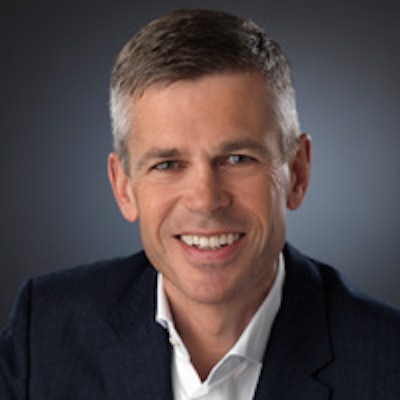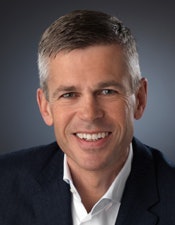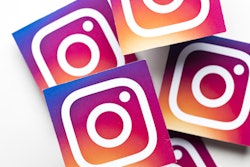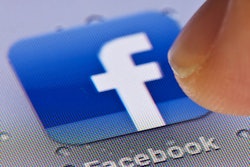
Radiologists and other healthcare professionals are suffering from an online identity crisis, because most social media guidelines recommend creating a private and public/professional Web presence, but in reality this is operationally impossible and even nonsensical, said leading healthcare IT expert Dr. Erik Ranschaert.
Radiological societies can help by offering more training and clear guidelines to their members, and more information should be provided regarding the security and privacy issues (and how to deal with them), he told AuntMinnieEurope.com.
"It would be more practical to get some guidelines or advice on how to use them and which social media are useful," said Ranschaert, a radiologist at Jeroen Bosch Ziekenhuis, 's-Hertogenbosch, the Netherlands. "That's the practical advice most users need, because most nonusers have a fear of mixing private/personal and professional information."
Great awareness of the do's and don'ts of social media would also help (see chart), he added.
| Do's and don'ts for social media | |||
| Do's | Don'ts | ||
|
|
||
Social media is becoming increasingly important -- even for radiologists -- according to Ranschaert and colleagues writing in Insights into Imaging (22 September 2015). Training and education of physicians and staff on how to deal with these new technologies is essential, they explained.
The article covers various forms of social media: Facebook, Twitter, Instagram, and more, and provides tips for radiologists. Ranschaert believes that online social networking enhances communication and collaboration among peers and also facilitates access to educational and scientific information.
"Although many radiologists are already using social media, a large number of our colleagues are still unaware of the wide spectrum of useful information and interaction available via social media and of the added value these platforms can bring to daily practice," he and his colleagues wrote. "For many, the risk of mixing professional and private data by using social media creates a feeling of insecurity, which still keeps radiologists from using them."
What is social media?
Social media generally refers to Internet-based tools that allow individuals and organizations to communicate and share information, ideas, personal messages, images, and other content. The availability of a variety of social media applications for mobile devices has greatly contributed to its success, because it renders social media usable for communication at any time.
As of January 2014, 74% of all online adults were using social networking sites, with LinkedIn, Pinterest, Twitter, and Instagram being the most popular. Given these changes, social media is gradually displacing the more traditional communication methods such as fax, email, and even phone calls, a trend that is accelerated by the widespread use of mobile devices equipped with social media applications, Ranschaert and colleagues wrote.
"This affects the way people communicate not only with friends and other individuals, but also with organizations, communities, hospitals, and medical professionals," they added. "All these changes, together with the increasing mobility of data, will have a major impact on healthcare, and will influence the evolution of our professional activities as medical doctors and radiologists."
Twitter is tops
What Ranschaert found most surprising is how actively Twitter is being used by radiologists to increase their visibility and become an "influencer," mainly in the U.S., he stated in an email to AuntMinnieEurope.com.
 Dr. Erik Ranschaert, Jeroen Bosch Ziekenhuis, 's-Hertogenbosch, the Netherlands.
Dr. Erik Ranschaert, Jeroen Bosch Ziekenhuis, 's-Hertogenbosch, the Netherlands."I also conducted a survey among European and U.S. radiologists from which it appeared that Twitter is being used more frequently by U.S. radiologists for professional purposes," he added. "There is even a hashtag lexicon available by which the most relevant radiology topics can be searched on Twitter. Users can even add a new radiology-related hashtag. The purpose is to 'homogenize' the vocabulary on Twitter specifically for radiology-related searches."
He also found the growing success of "TweetChats" during radiological meetings to be surprising. A TweetChat is a prearranged chat or discussion on Twitter that happens by including a predefined hashtag referring to the meeting in every tweet (e.g., #ECR2015). In this way, all meeting-related tweets are linked in a live Twitter conversation among attending and nonattending radiologists.
In an April 2014 article in the Journal of the American College of Radiologists (JACR), the authors concluded there was a 30% increase in the use of Twitter during the 2011 and 2012 RSNA annual meetings, which presents an opportunity to leverage Twitter to engage meeting attendees, improve scientific sessions, and increase collaboration at national radiology meetings.
Nowadays, TweetChats are organized at the annual scientific meetings of the RSNA, American College of Radiologists (ACR), and American Society of Neuroradiology (ASNR).
"It creates a lot more interaction between participants and even nonparticipants interested in what's happening during the meeting," he stated.
TweetChats aren't just for meetings: Several well-known radiologists, including Bruce Hillman, editor in chief JACR, and Ruth Carlos, deputy editor of the JACR, hold regular TweetChats, which they consider a great way to make connections both with colleagues within the radiology community and with the greater healthcare community and patients, Ranschaert and colleagues wrote.
Social media changes publishing
For the last 150 years, the sharing of information within the medical community has largely occurred through presentation of work in scientific meetings and publication in scientific journals. There is a hierarchical pathway that allows information to be distributed. With social media, on the other hand, there are no barriers or hierarchy, and there is no peer-review process. Anyone can publish anything online, unhindered by a lack of in-depth knowledge on a specific topic.
"Although this can be perceived as a disadvantage or potential risk in using [social media] to obtain medical information, [social media] should not be regarded as a completely uncontrolled information resource," Ranschaert and colleagues wrote. "Since there are no hierarchical or editorial barriers, users of [social media] can freely post their critiques and comments."
An open review process among the virtual community in social media replaces the more traditional review procedure; in other words, so-called collective intelligence is used to accept or reject the posted information, something Ranschaert finds exciting.
"This is really great," he wrote. "It makes publishing so much more interesting and interactive. Readers can immediately give online comments and authors can immediately react. Some journals such as the Journal of Medical Internet Research are already even using the open reviewing procedure, where 'voluntary' reviewers are welcome to review papers online. This will probably affect the traditional way of reviewing scientific papers."
What's next?
Ranschaert and his colleagues have recently submitted a paper for publication in a scientific journal about an international survey they conducted about the usage of social media by radiologists, called the RANSOM-survey.
"An important unanswered question is whether a change in the prevailing attitude of medical professionals to the use of social media will in fact have a positive impact on health outcomes," he concluded.
For the full article, click here.



















